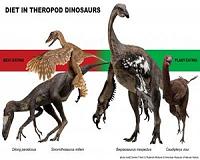| . |  |
. |
Seattle WA (SPX) Dec 22, 2010 Researchers from the University of Washington say the Mariana crow, a forest crow living on Rota Island in the western Pacific Ocean, will go extinct in 75 years. The extinction could happen almost twice as soon as previously believed. The crow's extinction can be prevented with a bird management program that focuses on helping fledgling birds reach their first birthday, said James Ha, UW research associate professor in psychology. Ha examined survival rates in 97 Mariana crows - Corvus kubaryi - that had been tracked between 1990 and 2010 by researchers. He found that 40 percent of fledgling crows made it to their first birthday. The rapid decline of young birds is twice what researchers previously estimated. "It's the first year of survival that's the most crucial," said Ha, lead author of a report on the research. "If only 40 percent of fledglings survive their first year, then we predict the species will go extinct in 75 years." Ha and his co-authors published the report in the current issue of Bird Conservation International. The 75-year extinction estimate is according to a population model that factors in the estimated number of existing Mariana crows - 330 - with the 40 percent first-year survival rate, average number of fledglings per nest and fertility of female birds. Using this model, Ha found that 91 birds would exist in 20 years and that in 75 years the species would be extinct. Previously, biologists believed that the first-year survival rate of Mariana crows was higher, around 60 to 80 percent. When Ha used those estimates in his population model, the outlook was not as grim for the birds. At 60 percent first-year survival rate, Mariana crows would dwindle to 218 birds in 20 years and become extinct in 133 years. And an 80 percent first-year survival rate projects that in 20 years there would be 453 birds, a growing population that would avoid extinction. "According to the population model, if we can boost fledgling survival from 40 percent to 70 percent, the Mariana crows will be fine," Ha said. Of the about 35 crow species, Mariana crows are considered rare and classified as critically endangered. Weighing about a half of a pound, Mariana crows are 40 percent smaller than other crows, such as the Northwest crow. Monogamously-mating, Mariana crows live exclusively on Rota Island, populated by about 1,200 people and located 56 miles northeast of Guam. Rota is a U.S. territory and is up for consideration as a U.S. national park. Ha and Renee Ha, co-author of the report and UW research scientist in psychology, fear that Rota faces the same avian demise as Guam, which has no forest birds. Brown tree snakes introduced to the island after World War II wiped out native birds, such as the Guam flycatcher and the Rufous fantail. The Has suspect that the uncontrolled increase of feral cats on Rota is leading to the decrease of Mariana crows, much like brown tree snakes led to the disappearance of forest birds on Guam. The researchers say that a captive rearing program could save the Mariana crows. They hope to set up a rearing facility where they could incubate eggs from the wild, raise the fledglings until their first birthday and then release the grown birds into nesting sites on the island.
Share This Article With Planet Earth
Related Links University of Washington Darwin Today At TerraDaily.com
 Meat-Eating Dinosaurs Not So Carnivorous After All
Meat-Eating Dinosaurs Not So Carnivorous After AllChicago IL (SPX) Dec 22, 2010 Tyrannosaurus rex may have been a flesh-eating terror but many of his closest relatives were more content with vegetarian fare, a new analysis by Field Museum scientists has found. The scientists, Lindsay Zanno and Peter Makovicky, who will publish their findings in the journal Proceedings of the National Academy of Sciences, used statistical analyses to determine the diet of 90 species of thero ... read more |
|
| The content herein, unless otherwise known to be public domain, are Copyright 1995-2010 - SpaceDaily. AFP and UPI Wire Stories are copyright Agence France-Presse and United Press International. ESA Portal Reports are copyright European Space Agency. All NASA sourced material is public domain. Additional copyrights may apply in whole or part to other bona fide parties. Advertising does not imply endorsement,agreement or approval of any opinions, statements or information provided by SpaceDaily on any Web page published or hosted by SpaceDaily. Privacy Statement |